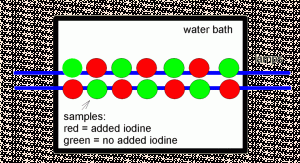So...I was having issues with losing some of my sps and lps so I sent in an ATI ICP test to see if there was something wrong with my water. The ATI test also tests an ro water sample as well. The ro came back perfect so I know that is not the issue. The tank water came back at 90%. The major thing that was not near the recommended level was the iodine. It came back as 15.62 micograms/l vs. the ATI ideal value of 65.03 micrograms/l. Would an iodine deficiency like this cause coral death? The ATI recommendation for this was was under the important fix category.
The other couple elements that were low and they recommended to adjust were:
Sulfer 798.1 mg/l Ideal value 920.4 mg/l
Bromine 49.87 mg/l Ideal value 67.03 mg/l
Fluorine 0.35 mg/l Ideal value 1.30 mg/l
Manganese 0 micrograms/l Ideal value 1.00 micrograms/l
I'm looking for suggestions on if these values are the cause for coral loss and if so, the best way to bring the correct elements back to the correct value. Thanks in advance.
The other couple elements that were low and they recommended to adjust were:
Sulfer 798.1 mg/l Ideal value 920.4 mg/l
Bromine 49.87 mg/l Ideal value 67.03 mg/l
Fluorine 0.35 mg/l Ideal value 1.30 mg/l
Manganese 0 micrograms/l Ideal value 1.00 micrograms/l
I'm looking for suggestions on if these values are the cause for coral loss and if so, the best way to bring the correct elements back to the correct value. Thanks in advance.



